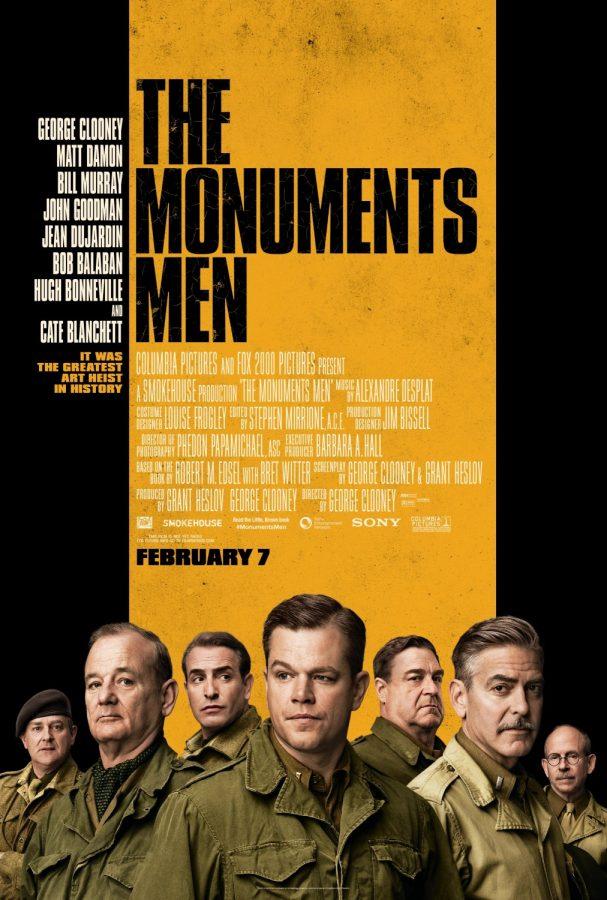Check out George Clooney’s IMDb page and one will find a laundry list of acting credits. Notable roles include a vampire hunter, a suave casino thief, a 1930s Odysseus, and an animated fox with a midlife crisis. Within this established career, Clooney has added directorial credits to his resume with his debut film “The Monuments Men”.
The film tells the story of a little-known WWII mission involving recovering art stolen by Hitler during the occupation. Art historian turned lieutenant Frank Stokes (Clooney) leads the mission with a motley crew that includes an architect (Bill Murray), a French pilot (Jean Dujardin) and the curator of the Met (Matt Damon).
Clooney’s directorial debut suffers from split personalities, unsure of whether it’s a comedy or drama. Stylized technical choices and the saccharine quality weaken the hilarity and chemistry between the actors. The film becomes the WWII version of “Ocean’s Eleven”, but with more cliché music and less Steven Soderbergh.
The first half of the film is arguably the most entertaining for the audience. Clooney presents the film like an episode of “Hogan’s Heroes” or “M*A*S*H”. Fantastic veteran actors such as Murray and Damon develop an assembly of colorful personalities. No one actor steals the show and audiences feel the playful chemistry develop between their characters.
The first half divides itself into a series of anecdotes as the group separates into their individual sub-missions. Clooney constructs these scenes in a humorous matter, whether it involves being pinned down by a child sniper or ousting a Nazi collaborator for housing stolen art. Fresh dialogue informs the humor in these scenes through the seamless witty comebacks between characters.
With the tripping over foxholes and discussions over who will be the distraction for gunfire, one almost expects Hawkeye to appear with a sharp one-liner (although Murray makes a reference to the character with his purple robe, helmet, and untied combat boots). Quick pacing also accompanies the first half, enhancing the light-hearted nature of the film.
At the same time, cheesy stylized effects also mark the film’s first half. Ominous violin music signaling those ‘pesky Germans’ and overt patriotic symbolism can cause some cringing. These flaws potentially accentuate the hilarity of the film when interpreted as a comedy. The first half does not take itself seriously, and neither does the audience. Suspension of disbelief through comedy would have made this film ultimately successful.
Except the tone changes dramatically in the second half. Clooney attempts the emotional pull of war by transforming his comedy into a war drama. Instead of the powerful message, audiences feel as if they are watching a completely different film. Pacing grinds to an aching halt and the characters begin to lose their sense of flavor. The oncoming Russian forces from the east serve to manufacture tension, but they end up becoming a predictable moot point in the film.
Clooney could have rationalized this sudden shift by abandoning the stylistic elements of the first half. Absence of bombastic music would signal to viewers a new realism reminding them about the horrors of war. Unfortunately, these elements remain, culminating with a Disney-esque ending fueled with naïve optimism. Clooney drew us in with the comedic theme, but his infusion of drama only leaves us confused by the end.
If you were able to only pay half the movie admission and watch the first hour, I would recommend seeing this film. The first half is the only part of the movie worth watching.
Rating: 2.5 out of 5.


